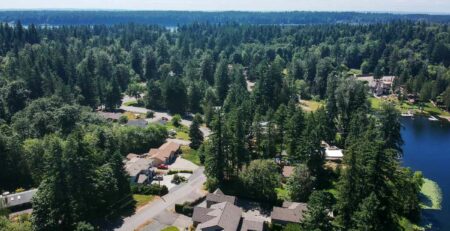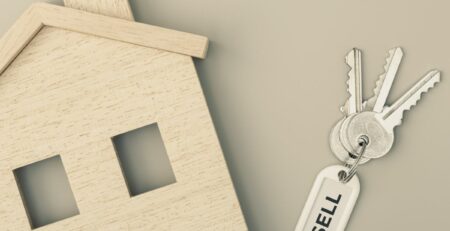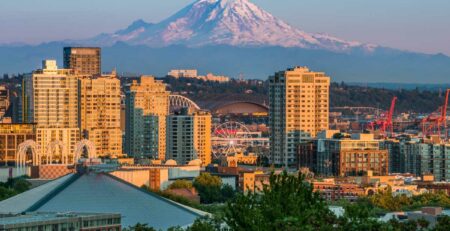Factors To Spot the Perfect Neighborhood
Finding the perfect neighborhood directly impacts our quality of life and overall satisfaction with our living environment. The neighborhood we choose can shape our daily routines, social interactions, and even our sense of belonging. It affects our access to amenities, safety, education, and opportunities for leisure activities.
Whether you’re an individual searching for a place to call home or a family looking for a nurturing environment for children, the right neighborhood can provide a sense of security, convenience, and a supportive community. Therefore, taking the time to identify the perfect neighborhood is a worthwhile endeavor.
Factors to Consider when Choosing a Neighborhood:
- Assess your specific needs, such as proximity to schools or workplaces, family-friendly amenities, or access to outdoor activities.
- Research the local area’s demographics, including age groups, family dynamics, crime rates, and safety records.
- The availability of infrastructure and amenities, such as transportation options, shopping centers, restaurants, and healthcare facilities, should be evaluated.
- The neighborhood schools’ quality, educational opportunities, and overall cost of living must be considered.
Define Your Needs and Preferences
Determine your Lifestyle Requirements:
When searching for the perfect neighborhood, consider your specific lifestyle requirements. First and foremost, if you have a family or plan to start one, family-friendly amenities should be a priority. Look for neighborhoods with parks, playgrounds, community centers, or recreational facilities suitable for children. Additionally, proximity to schools is essential, especially if you have school-aged children. Consider the distance and accessibility of quality educational institutions in the area.
Identify your Housing Preferences:
Consider whether you prefer renting or homeownership based on your financial situation and long-term goals. If you want to rent, research rental properties’ availability and affordability within the neighborhood. On the other hand, if you aim to own a home, explore the housing market in the area, including property prices and mortgage options. Think about the size and layout of the dwelling that would accommodate your family and meet your functional requirements. Assess the number of bedrooms, bathrooms, and overall square footage needed to ensure a comfortable living space for everyone.
Research the Local Area
Demographics and Population:
When evaluating neighborhoods, consider the demographics and population of the area. Look into the age groups and family demographics prevalent in the neighborhood. Are there many families with young children, or is it predominantly a retirement community? Check local crime statistics and safety reports to gain insight into the overall safety of the area. A safe neighborhood provides peace of mind and ensures a secure living environment for you and your loved ones.
Infrastructure and Amenities:
Infrastructure and amenities play a significant role in the livability of a neighborhood. Evaluate the accessibility of transportation options in the area. Consider the availability of public transportation systems, such as buses or trains, and assess their reliability and convenience for your daily commute or travel needs. Look for nearby shopping centers that provide various retail options, grocery stores, and other essential services. Assess the healthcare facilities and quality of medical services available in the neighborhood. Look for nearby hospitals, clinics, and medical centers.
Assess the Cost of Living
Housing Prices and Rental Rates
Research the housing prices and rental rates in the neighborhood you are considering. Compare the costs of different housing options, such as apartments, townhouses, or single-family homes, to determine their affordability within your budget. Consider the prevailing market conditions, trends, and potential for property value appreciation or depreciation.
Property Taxes and Homeowners Association Fees
Find out about the property tax rates in the neighborhood. Property taxes can vary significantly between different areas and impact your monthly expenses. Additionally, if the neighborhood has a homeowners association (HOA), inquire about the associated fees. HOA fees can cover maintenance costs, community amenities, and services. Consider the affordability and value of these fees in relation to the benefits provided.
Utility and Living Expenses
Estimate the utility costs of living in the neighborhood. Research average costs for electricity, water, gas, and other utilities. Consider other living expenses, such as groceries, transportation, and healthcare. Some neighborhoods may have higher living expenses due to location or lifestyle amenities. Understanding these costs will help you budget effectively and determine whether the neighborhood is financially feasible.
Compare the Cost of Living to your Budget and Income
Once you have gathered information on housing prices, property taxes, homeowners association fees, utility, and living expenses, compare these figures to your budget and income. Assess whether the cost of living in the neighborhood is within your financial means and aligns with your financial goals. Consider your current income, expenses, and savings to determine if you can comfortably afford the neighborhood without compromising your financial stability and long-term plans.
Explore the Community and Lifestyle

Walk or drive around the area- Take the time to explore the neighborhood on foot or by car. Pay attention to the overall layout, street conditions, and ease of navigation. Assess the proximity of amenities, schools, and parks to your potential residence. Consider the availability of sidewalks, bike lanes, or public transportation stops, depending on your preferred mode of transportation. It’s also good to explore different times of the day, mornings, afternoons after school lets out, and evenings. Evenings can be a big indicator of the area, is there activity or do people hide in their homes.
Observe the cleanliness and maintenance – Notice the general cleanliness and upkeep of the neighborhood. Well-maintained streets, tidy lawns, and adequately maintained buildings indicate a community that takes pride in its appearance. Cleanliness and maintenance create a pleasant living environment and reflect community engagement and pride.
Talk to residents and get their perspectives – Engage with residents in the neighborhood to gain firsthand insights. Strike up conversations with neighbors or visit local businesses to ask about their experiences living in the area. Inquire about their satisfaction with the neighborhood, any challenges they may face, and their overall perspective on the community.
Participate in Local Events and Activities:
Festivals, farmers markets, or community gatherings – Attend local festivals, farmers markets, or community gatherings in the neighborhood. These events often unite residents, fostering community and providing opportunities to meet neighbors.
Recreation centers, sports leagues, or hobby clubs – Explore the availability of recreation centers, sports leagues, or hobby clubs in the neighborhood. These facilities and activities provide physical fitness, skill development, and social interaction opportunities.
Volunteer opportunities and community engagement – Inquire about volunteer opportunities or community engagement initiatives in the neighborhood. Community service can provide a sense of fulfillment and help you connect with residents with similar values. Volunteer work also offers insights into the community’s commitment to social causes and civic engagement.
Consider Future Development and Growth
Research Upcoming Projects or Developments
Construction or Renovations in the Area: Investigate if there are any significant construction projects or renovations happening in the neighborhood. This could include new housing developments, commercial buildings, or public infrastructure improvements like roads or parks. Understanding these projects can give you insights into the neighborhood’s direction and potential for growth or transformation.
Urban Planning Initiatives or Infrastructure Improvements – Look into any urban planning initiatives or infrastructure improvements planned for the area. This could involve city-led initiatives to revitalize the neighborhood, enhance transportation systems, or create community spaces. Stay informed about these plans, as they can significantly influence the future character and livability of the area.
Evaluate Potential Impact on Property Values and Quality of Life
Property appreciation potential: Determine whether the planned developments will likely positively impact property values in the long run. Some projects can contribute to property appreciation. Research the potential impact on property values to ensure your investment aligns with your financial goals. For example: Is there a Walmart opening down the street? What will that do to your traffic and commute?
Noise or traffic concerns: Be aware of any potential noise or traffic concerns arising from ongoing or future construction projects. Assess whether the noise levels or increased traffic may affect your daily life and overall comfort in the neighborhood. Factors like proximity to major construction sites, road closures, or changes in traffic patterns should be considered.
Make a Decision and Take Action
Compile All Research and Evaluate the Pros and Cons
After conducting thorough research on various aspects of the neighborhoods you’re considering, it’s time to compile all the information and evaluate the pros and cons of each option. Review your notes, gather data, and consider demographics, amenities, safety, cost of living, lifestyle compatibility, upcoming developments, and potential impact on property values. Create a list of positive and negative for each neighborhood to facilitate a systematic comparison. This might all seem like a lot of work, but this is your life and will affect you for many years.
Prioritize your Needs and Preferences
Once you have evaluated the pros and cons, it’s essential to prioritize your needs and preferences. Consider the factors most important to you and align them closely with your desired lifestyle and plans. Assess what aspects you are willing to compromise on and which are non-negotiable. This prioritization process will help you identify the neighborhood that best meets your unique requirements and aspirations.
Seek Professional Advice if Needed (e.g., real estate agent):
If you require additional guidance or expertise, consider seeking professional advice from a real estate agent specializing in the area of your choice. A knowledgeable agent can provide insights into market trends, property values, and specific neighborhood details that may not be readily available through your research. They can also assist you in evaluating your options, negotiating deals, and navigating the process of securing housing in your chosen neighborhood.
Take Necessary Steps to Secure Housing
Once you have decided and identified the perfect neighborhood, it’s time to take the necessary steps to secure housing. If you want to rent, begin finding a suitable rental property, understand lease terms, and complete the required paperwork. Furthermore, if you are purchasing a home, engage in the house-hunting process, work with a lender to secure financing, and go through the necessary steps for closing the deal. Be proactive, organized, and diligent to ensure a smooth transition into your new neighborhood.
Moreover, throughout the entire process, remember to remain flexible and open-minded. Sometimes unexpected opportunities or challenges may arise, and adapting is essential. Finally, by following these steps, you can confidently make an informed decision, secure housing in your chosen neighborhood, and embark on an exciting new chapter.
















